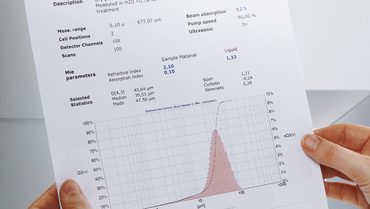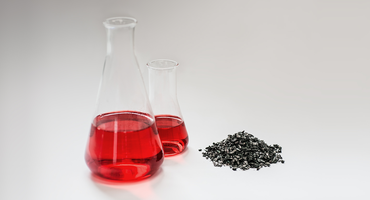The autocorrelation function describes how quickly the measurement signal during the dynamic light scattering changes.
This simply involves comparing the scattered light intensity measured with the detector at a specific time with the intensity measured shortly afterward. If the intensity has changed only slightly, then a high autocorrelation exists, while a significant change in the intensity means a low correlation. Then the comparisons are drawn not only for short time intervals, but also for increasingly longer ones. If this process is repeated continuously, it yields what is termed as the autocorrelation function, from which it is possible to calculate the diffusion coefficient and thereby the particle size by applying appropriate mathematical procedures.



